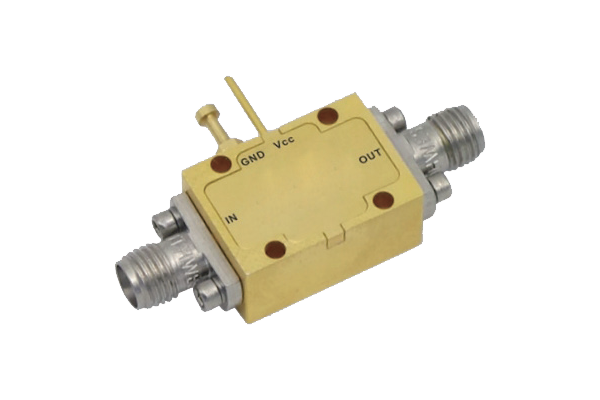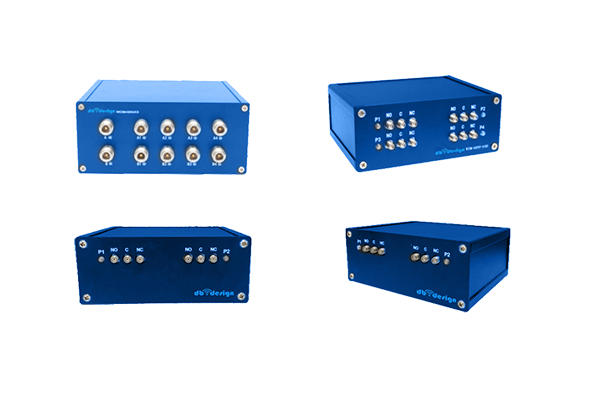
Pin diode components are considered indispensable in advanced RF applications because of their core operational properties Their swift switching ability coupled with low parasitic capacitance and modest insertion loss makes them ideal for switch modulator and attenuation applications. The basic mechanism behind pin diode switching depends on regulating the device current via an applied bias voltage. Biasing the diode adjusts the depletion region size in the p-n junction, changing its conductive state. Setting different bias levels allows PIN diodes to perform high-frequency switching with minimal distortion
PIN diodes find placement inside complex circuit frameworks when precise timing and control is required They are suited to RF filtering arrangements for selective band pass and band stop operations. Their high-power endurance makes them appropriate for amplifier power dividing and signal generation functions. Advances producing smaller and efficient PIN diodes have widened their roles in modern wireless and radar applications
Coaxial Switch Design and Performance Analysis
Coaxial switch design is a sophisticated process involving many important design considerations Coaxial switch effectiveness depends on the switch kind frequency of operation and insertion loss metrics. Minimizing insertion loss and enhancing isolation are primary goals for coaxial switch engineering
Analyzing performance involves measuring important parameters like return loss insertion loss and port isolation. These values come from combined use of simulations theoretical predictions and experimental validation. Accurate performance evaluation is key to ensuring coaxial switches operate dependably
- Simulation, analytical modeling and experimental testing are widely utilized to examine coaxial switch designs
- The behavior of a coaxial switch can be heavily influenced by temperature impedance mismatch and manufacturing tolerances
- Recent innovations and trends in coaxial switch design prioritize better metrics together with reduced size and lower power draw
LNA Performance Enhancement Techniques
Tuning LNA gain efficiency and performance parameters is essential for outstanding signal fidelity in diverse systems This calls for deliberate active device selection bias strategies and topological design choices. A strong LNA design reduces noise contribution and boosts signal amplification with minimal distortion. Simulation based analysis is critical to understand design impacts on LNA noise performance. Striving for a minimal Noise Figure assesses success in retaining signal power while limiting noise contribution
- Selecting devices that exhibit low intrinsic noise is a primary consideration
- Setting proper and optimal bias parameters is necessary to suppress noise in active devices
- Circuit topology significantly influences overall noise performance
Implementing matching networks noise reduction strategies and feedback control enhances LNA outcomes
Signal Path Control Using Pin Diodes

PIN diode switches serve as practical and efficient solutions for directing RF signals in many systems Fast state changes in these devices permit agile dynamic routing of RF signals. PIN diodes provide the dual benefit of small insertion loss and high isolation to protect signals. Use cases include antenna selection duplexer networks and phased array antennas
Operation relies on changing the device resistance via applied control voltage to switch paths. In the off deactivated or open state the diode presents a high resistance path blocking signal flow. A controlled forward voltage lowers resistance and enables unimpeded RF signal flow
- Furthermore PIN diode switches boast speedy switching low power consumption and small size
Multiple configurable architectures and design schemes of PIN diode switches facilitate complex routing operations. Combining multiple switch elements makes possible dynamic switching matrices enabling flexible routing
Coaxial Microwave Switch Testing and Evaluation

Testing and assessment of coaxial microwave switches are crucial to ensure efficient operation within systems. Several influencing factors such as insertion reflection transmission loss isolation switching speed and frequency range determine performance. Complete assessment involves quantifying parameters over diverse operational and environmental test conditions
- Moreover additionally furthermore the evaluation ought to include reliability robustness durability and environmental tolerance considerations
- Finally the result of robust evaluation gives key valuable essential data for choosing designing and optimizing switches to meet specific requirements
Review of Techniques to Reduce Noise in Low Noise Amplifiers
LNAs serve essential roles in wireless RF systems by amplifying weak signals and curbing noise. This review article offers an in-depth examination analysis and overview of LNA noise reduction approaches. We explore investigate and discuss key noise sources including thermal shot and flicker noise. We further analyze noise matching feedback topologies and bias optimization strategies to suppress noise. This review spotlights recent developments like new materials and inventive circuit designs that improve noise figures. Offering a thorough understanding of noise mitigation principles and methods the review helps designers and engineers build high performance RF systems
PIN Diode Applications in High Speed Switches

Their remarkable unique and exceptional electrical traits make them apt for high speed switching systems Low capacitance combined with low resistance produces rapid switching for applications requiring precise timing. In addition PIN diodes display linear voltage response that supports precise amplitude modulation and switching performance. Versatility flexibility and adaptability enable their suitable applicable and appropriate deployment in many high speed applications Examples of deployment include optical communication systems microwave circuits and signal processing equipment and devices
Coaxial Switch IC Integration and Circuit Switching
IC coaxial switch technology represents a major step forward in signal routing processing and handling for electronic systems circuits and devices. Specialized ICs manage control and direct signal transmission through coaxial cables ensuring high frequency performance and minimal propagation latency. Miniaturization through IC integration results in compact efficient reliable and robust designs fit for dense interfacing integration and connectivity scenarios
- By rigorously meticulously and carefully implementing these techniques practitioners can achieve LNAs with remarkable noise performance for sensitive reliable electronics By rigorously meticulously and carefully implementing these techniques practitioners can achieve LNAs with remarkable noise performance for sensitive reliable electronics With careful meticulous and rigorous execution of these strategies designers can obtain LNAs exhibiting excellent noise performance for sensitive reliable systems By carefully meticulously and rigorously applying these approaches designers can realize LNAs with outstanding noise performance low-noise amplifier enabling sensitive reliable electronic systems
- Deployment areas span telecommunications data communications and wireless networking environments
- Coaxial switch IC implementations support aerospace defense and industrial automation applications
- Consumer electronics audio visual equipment and test and measurement systems are typical domains
Considerations for LNA Design at Millimeter Wave Frequencies

LNA engineering for mmWave bands involves dealing with increased attenuation and heightened noise impacts. Parasitic capacitances and inductances become major factors at mmWave demanding careful layout and parts selection. Ensuring low input mismatch and strong power gain is critical essential and important for LNA operation at mmWave. Choosing appropriate active devices like HEMTs GaAs MESFETs or InP HBTs is key to achieving low noise at mmWave bands. Moreover additionally furthermore the development implementation and tuning of matching networks plays a vital role in ensuring efficient power transfer and impedance match. Paying attention to package parasitics is necessary since they can degrade LNA performance at mmWave. Applying low loss transmission lines and meticulous ground plane design is essential necessary and important to lower signal reflection and keep bandwidth
Modeling and Characterization of PIN Diodes for RF Use
PIN diodes act as fundamental components elements and parts for many RF switching uses. Detailed accurate and precise characterization of these devices is essential to design develop and optimize reliable high performance circuits. This requires analyzing evaluating and examining electrical properties including voltage current resistance impedance and conductance. Their frequency response bandwidth tuning capabilities and switching speed latency or response time are likewise measured
Additionally the development of accurate models simulations and representations for PIN diodes is vital essential and crucial for predicting their behavior in RF systems. Various numerous modeling approaches including lumped element distributed element and SPICE models are applicable. Choosing the proper model relies on the specific application requirements and the desired required expected accuracy
State of the Art Techniques for Low Noise Amplifier Design
LNA engineering calls for careful topology and component selection to meet stringent noise performance goals. Recent semiconductor innovations and emerging technologies facilitate innovative groundbreaking sophisticated design methods that reduce noise significantly.
Among the techniques are utilizing implementing and employing wideband matching networks integrating low noise high intrinsic gain transistors and refining biasing schemes strategies and approaches. Further advanced packaging approaches together with thermal management methods play a vital role in minimizing external noise contributions. Through careful meticulous and rigorous implementation of these approaches engineers can achieve LNAs with exceptional noise performance supporting sensitive reliable systems
